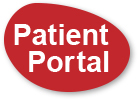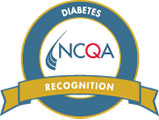To Buy Isofair Online Visit Our Pharmacy ↓
 The History and Evolution of Isofair Standards
The History and Evolution of Isofair Standards
Origins of Isofair Standards in Industrial Revolution
The roots of Isofair standards trace back to the Industrial Revolution, a period that fundamentally transformed manufacturing and production. This era witnessed the rise of mass production, prompting the need for standardized practices to ensure consistency and quality. Factories' rapidly increasing outputs required methods to align product specifications, essentially leading to the birth of standardization. During this period, early technical committees were formed to set foundational guidelines, aiming to streamline processes and reduce variability.
Let’s consider a factory needing to produce components with precise dimensions. Standardization ensured that every unit met the required specifications, avoiding the complexities of "count and pour" during mass production. This early form of standardization laid the groundwork for what would become more sophisticated and globally adopted Isofair standards over time. As factories transitioned from artisanal to mechanized production, these standards became a cornerstone of industrial efficiency and reliability.
Standardization was essential not just for productivity but also for safety and regulatory compliance. It allowed for smoother operations, creating a robust framework that would eventually evolve beyond the industrial context. Below is a comparison of early to modern Isofair standards practices:
| Era | Characteristic | Impact |
|---|---|---|
| Early Industrial Revolution | Initial Technical Committees | Consistency in product dimensions |
| Modern Era | Advanced Digital Integration | Enhanced global compliance and interoperability |
Influence of Early Technical Committees on Isofair

Technical committees played a pivotal role in shaping isofair by meticulously scrutinizing emerging industrial needs and formulating comprehensive guidelines. As early as the dawn of modern engineering, these committees acted as the 'pharm land' for industrial standards, prescribing detailed 'sig' for various processes and products. Their efforts were akin to a 'count and pour' operation, ensuring precision and consistency in every directive issued. They laid the groundwork for future innovations by establishing reliability and quality benchmarks.
These early committees brought together experts from diverse fields, creating a melting pot of knowledge that propelled isofair forward. Through rigorous 'DUR' sessions and meticulous oversight, they ensured that every standard was technologically sound and globally applicable. Their influence was far-reaching, setting the stage for today's robust standards that underpin international trade and industrial collaboration. Their foundational work has stood the test of time, navigating through the digital age and beyond, proving that well-established standards are crucial for sustained industrial progress.
Key Milestones in Isofair Standards Development
As Isofair standards began to take shape, key turning points were pivotal in their evolution. The codification of uniform practices emerged during a crucial era of industrial advancements, and this was no small feat. One notable milestone was the formation of specialized technical committees who acted much like the pharm techs in a bustling pharmacy—meticulously reviewing, verifying, and refining every standard. These committees operated with the same precision as pharmacists engaged in a Meds Check, ensuring each standard was meticulously crafted and perfectly suited to the needs of a rapidly modernizing world.
Another crucial development was the adoption of digital tools and automation, akin to the introduction of robots in pharmacies. This transition not only expedited processes but also fortified the accuracy and reliability of Isofair standards. By the late 20th century, the integration of digital protocols could be seen as the "clean room" era for Isofair—a time of heightened precision and sterility in standard formulation. These milestones collectively transformed Isofair from a set of rudimentary guidelines into a robust, globally recognized framework.
Impact of Digital Era on Isofair Standardization

The advent of the digital era has significantly transformed the landscape of Isofair standardization, ushering in a new age of precision and efficiency. The integration of digital technologies has facilitated the transition from manual processes to automation, akin to the way a 'Robot' in a pharmacy dramatically boosts efficiency and accuracy in dispensing medications. Isofair's precision in measurements and processes has benefited immensely from real-time data analytics and internet connectivity, enabling rapid updates and seamless scalability across industries.
Moreover, the rise of digital platforms has democratized access to Isofair standards, much like the 'Drive-Thru’ option in pharmacies, making standardization documents and updates available at the click of a button. The digital shift has also paved the way for enhanced collaboration among global stakeholders, ensuring that industry practices remain consistent and compliant. Despite these advancements, this transition is not without challenges, such as the 'Label Sticker Shock' that industries face when dealing with the high costs of integrating new digital systems.
Global Adoption and Implementation of Isofair Standards
In recent years, the widespread adoption of Isofair standards has transformed industries globally. From safety protocols to quality assurance, firms are increasingly relying on these standards as a script for ensuring excellence. The implementation has been swift, with organizations executing these guidelines stat to keep pace with international benchmarks.
In sectors like pharmaceuticals, Isofair standards ensure that procedures from elixir preparation to UD packaging adhere to the highest quality. Companies have embraced these measures to drive efficiency, reduce errors, and achieve robust compliance in an ever-evolving landscape.
As firms globally continue to count and pour resources into aligning with Isofair standards, they face unique challenges and opportunities. Integrating these standards requires a commitment to continuous improvement, technological investments, and rigorous employee training. Nevertheless, this global movement promises significant benefits, including enhanced consumer trust and streamlined operations across borders.
| Region | Implementation Rate (%) |
|---|---|
| North America | 85% |
| Europe | 90% |
| Asia | 75% |
| Africa | 60% |
Future Prospects and Challenges for Isofair Standards
As Isofair standards march into the future, they face dynamic prospects and notable challenges. Advances in technology offer a plethora of opportunities, especially with digital transformations affecting various industries. However, with such rapid progression, there’s a pressing need for standards to keep pace to avoid becoming obsolete. This brings about the challenge of ensuring comprehensive yet adaptable regulation, preventing any label sticker shock in the form of unexpected complications.
Another significant hurdle is the global harmonization of these standards. Achieving uniform adoption requires considerable collaboration among international bodies, much like a complex comp endeavor. Resistance can emerge from stakeholders comfortable with their established norms, making the transition akin to navigating a pharmageddon.
Moreover, maintaining stringent quality and safety measures remains paramount. The pressure to innovate quickly could lead to shortcuts, risking a quack effect. As the global landscape evolves, the challenge will be to uphold the integrity of Isofair standards while embracing innovation—much like balancing the efficiency of a drive-thru with the thoroughness of in-depth quality checks.
![]()








 We are now located at
We are now located at


